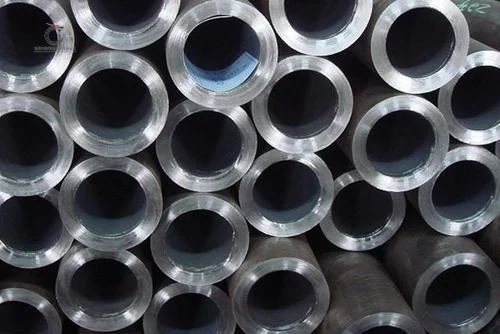Tensile strength of the thick-walled seamless pipe
The maximum wall thickness of the thick-walled seamless pipe is up 60mm
Seamless steel pipes are represented by outer diameter and wall thickness. Thick-walled seamless steel pipes are mainly used for mechanical processing, coal mines, hydraulic steel, and other purposes.
Thick-walled seamless pipe production is divided into cold-drawn and hot-rolled, and the material is divided into the ordinary pipe and alloy pipe. According to the purpose, it is divided into seamless steel pipes for structure; seamless steel pipes for transportation; seamless steel pipes for boilers; high-pressure seamless steel pipes for boilers; high-pressure seamless steel pipes for fertilizer equipment; seamless steel pipes for geological brick exploration; Seam steel pipes; seamless steel pipes for petroleum cracking; seamless steel pipes for ships; cold-drawn cold-rolled precision seamless steel pipes; various alloy pipes.
Classification of thick-walled seamless steel pipes-hot-rolled thick-walled seamless steel pipes, cold-rolled thick-walled seamless steel pipes, cold-drawn thick-walled seamless steel pipes, extruded thick-walled seamless steel pipes, pipe jacking.

The calculation formula of steel pipe weight: [(outer diameter-wall thickness)*wall thickness]*0.02466=kg/m (weight per meter).
The calculation formula for the theoretical weight of thick-walled seamless pipe stainless steel: (outer diameter-wall thickness) × wall thickness × 0.02491 = KG/M (weight per meter).
The theoretical weight calculation formula of thick-walled seamless pipe alloy steel: (outer diameter-wall thickness) × wall thickness × 0.02486 = KG/M (weight per meter).
Tensile strength of the thick-walled seamless pipe
| Name | Weighing symbol | Unit | Description |
| strength | Strength refers to the ability of metal to resist plastic deformation and fracture under external force | ||
| tensile strength | σb | MPa | When a metal sample is stretched, the ratio of the maximum load it bears to the original cross-sectional area of the sample before it breaks is called the tensile strength. σ=Fb/So Where: Fb--the maximum force that the sample bears when it is broken, N (Newton); So--the original cross-sectional area of the sample, mm² |
The biggest difference between thick wall steel pipe and thin wall steel pipe is the pipe wall thickness, in general, is drawn thin-walled steel technology, and general use of hot-rolled thick-walled steel pipe technology, if it is used to distinguish between units of measure, then, generally, the wall thickness/diameter equal to 0.02 is thick and thin-walled steel pipe watershed, wall thickness/diameter less than 0.02 thin-walled steel pipe, thick wall steel pipe is greater than in the purposes, the thin-walled steel multi-purpose the pipe. The multi-walled steel hollow parts are used in the blank. Pressure as well as an important channel to use.
Thick-walled steel is mainly used in water engineering, petrochemical industry, chemical industry, power industry, agricultural irrigation, and urban construction. For the transport of liquids: water supply and drainage. For gas transportation: gas, steam, liquefied petroleum gas. For structural purposes: as piling pipe for bridges; docks, roads, buildings, and other structures tube.
The key to quality for thick wall steel pipe should be thickness uniformity, thick-walled steel pipe wall thickness is not controlled and directly affect the quality and usefulness of steel pipe, thick wall steel pipe, large diameter seamless steel pipe for general use in a variety of machining, thick wall parts processing, uniform wall thick-walled steel pipe will directly affect the quality of post-processed parts, thick-walled steel pipe wall is not controlled, the overall quality of steel is not strictly.






